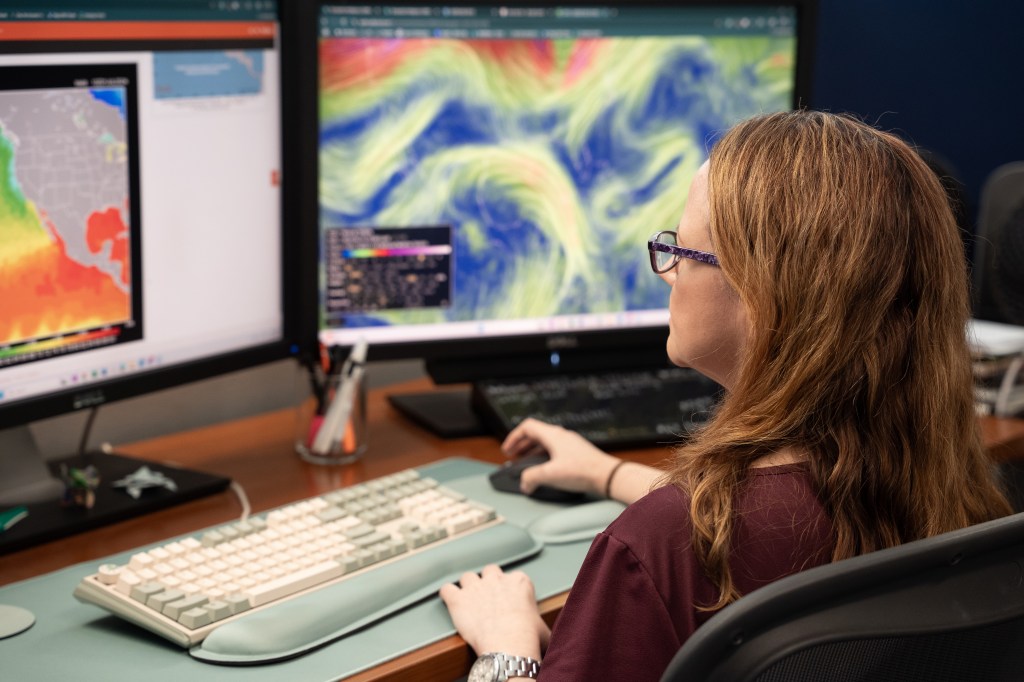Hurricane photo provided by NOAA
Tropical storms have common names that may remind you of your favorite neighbor – hello, Jerry – but they mean serious business. That’s why every year as the hurricane season approaches, our teams take steps to ensure safety of our employees, and the safe and reliable delivery of natural gas to our customers.
Because storms can hit along the Gulf Coast and hundreds of miles inland, our teams prepare in multiple ways by reviewing and enhancing existing storm preparedness and response plans, applying lessons learned from previous years and hosting emergency exercises.
Those exercises, which include participation from the Security Operations Center, safety department, gas control and field operations, simulate a weather event and roles during an emergency to practice responses to various situations to ensure continued improvement.
Williams also has a dedicated Geospatial Intelligence team, which includes trained meteorologists who monitor weather-related events in real-time across our footprint.
These teams work closely during weather events and share information using sources such as the National Weather Service, National Oceanic and Atmospheric Administration (NOAA) and AccuWeather. Our Geospatial Intelligence System team maintains an internal weather map that captures all states where Williams has operations and provides information about significant weather-related events, adding another layer to our monitoring capabilities.
In the event of extreme weather conditions, the safety of our employees and their families is our highest priority. Beyond operational integrity, we have robust plans and tools in place to alert employees if evacuation or other preparations are necessary.

Last year, Williams’ Enterprise Emergency Management team completed an initiative to develop a standardized set of emergency preparedness and response guidelines for natural disasters to supplement site-specific emergency plans for all operational sites. The team assembled working groups comprised of operations personnel with interest or experience in various disaster types. Each working group started with preparedness guidelines and developed templates specific to each disaster type. These templates are now the foundation for building emergency plans at all Williams operational sites.
A hurricane is a tropical cyclone with winds of 74 miles (119 kilometers) per hour or greater.
The World Meteorological Organization selects names each year for tropical cyclones. In 2025, they span Andrea to Wendy.
Forecasters within NOAA’s National Weather Service predict above-normal hurricane activity in the Atlantic basin this year, predicting 13 to 19 named storms, with about half forecast to become hurricanes.
One of the greatest threats posed by hurricanes is the storm surge, which can precede landfall by several hours and result in severe flooding of coastal lands and nearby low-lying areas. In addition, hurricanes can cause significant damage well inland, including tornadoes, strong winds and heavy rainfall.
The Atlantic hurricane season runs from June 1 to Nov. 30. Ready.gov provides information and resources on how to prepare for a hurricane.
